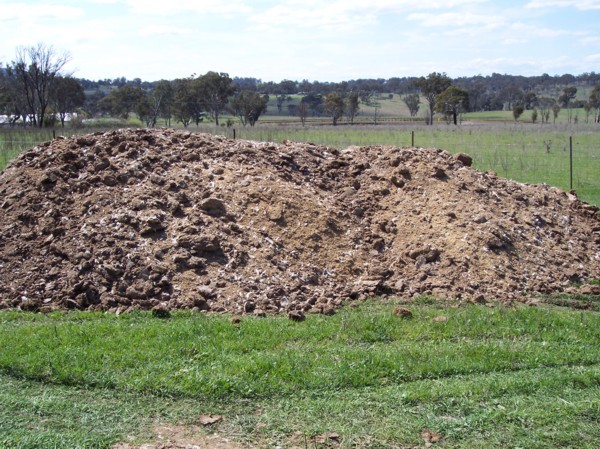Poultry litter as a potential fertiliser has received limited accolades to date due to perceptions such as inconsistent nutrient supply, material bulk, leaching and/or run-off to the environment. A Poultry CRC project led by Dr Matthew Redding from Queensland’s Department of Agriculture, Fisheries and Forestry, with collaboration from the University of New England’s Professor Steve Walkden-Brown and Dr Fakrul Islam, is developing value-adding strategies for poultry litter as a fertiliser that minimises nutrient loss to the environment, while providing better nutrient supply characteristics than traditional fertilisers. This is being achieved via the addition of ‘sorbers’ (synthetic clays) in various formulations to litter.
Matt’s research and field trial has thus far have been able to demonstrate that spent litter and spent litter formulations can perform as well as conventional fertiliser with regard to dry matter production. Primarily, Nitrogen (N) and Phosphorus (P) are key nutrients of interest for fertiliser application, and this research has compared the availability of N and P from litter formulations versus conventional inorganic fertilisers. His research has already produced a number of publications, and was highlighted earlier in the year at a PIX litter management workshop. However, the results are a mixed bag – to squeeze the full potential out of spent litter requires some real finesse.
Pot trials for N and P indicated a stronger initial nutrient availability from the conventional fertiliser treatments. However, this is not necessarily an advantage – it is during this initial high availability that the greatest nutrient losses can occur. For example, in the case of P, in a pot trial, the total dry matter production for two soils under investigation (a sandy soil and red ‘Toowoomba’ ferrosol) was greater for inorganic P sources than for spent litter (P < 0.05).
The exciting result is in the detail of the trial, where the researchers were able to show that modification of spent litter with synthetic clays was able to defer nutrient availability to later in the growing cycle (Figure 1) in the sandy soil. This is consistent with the on-going mineralisation from organic nutrient forms, and a beneficial effect of the smart sorbers. “The key feature of the graph herein is that we have on-going P recovery, whereas conventional fertiliser has really stoped delivering anything.” In fact, sorber formulations significantly increased dry matter production in the last three official cuts of the trial (P < 0.05).
“Unfortunately when you are trying this stuff for the first time, it’s hard to get the rates correct – and I think we overdid it!” he said. First year availability of applied P with the fertiliser formulations were acceptable compared to inorganic fertiliser: 54% (sandy soil) and 63% (red ferrosol) of that for conventional fertiliser additions, but the team feel they probably indicate an over-application of the sorber, since the same behaviour was observed in the sorber treated with conventional fertiliser.
Where conventional fertilisers supply an initial superfluity of P immediately after application, followed by a subsequent “crash” in available P levels, it appears that the use of sorbers can exchange high initial P availability for a more moderate, longer-term P supply. “Additionally, our data suggests that we could apply higher rates of P without environmental losses or loss of efficiency” said Matt.
Field trial data collected from the red ferrosol indicated that spent litter and inorganic fertiliser were equally good sources of P – a very positive result.
“Our studies have also shown that the use of sorber additions can close off the leaching, run-off, and volatilisation nutrient loss pathways” said Matt. “In real enterprise applications, this would increase nutrient use efficiency and decrease environmental contamination. These advantages may not be fully realised in the pot and field trials, but will be very important advantages to the end-user”.
The final step for this project is to produce documentation to support the commercialisation of fertiliser products from poultry litter. This project is set to deliver real-world benefits to industry via converting a waste stream into a valued resource, thereby reducing the industries environmental footprint even further and providing producers with a potential revenue stream.



